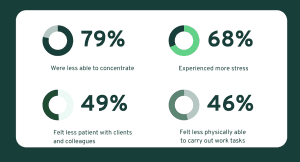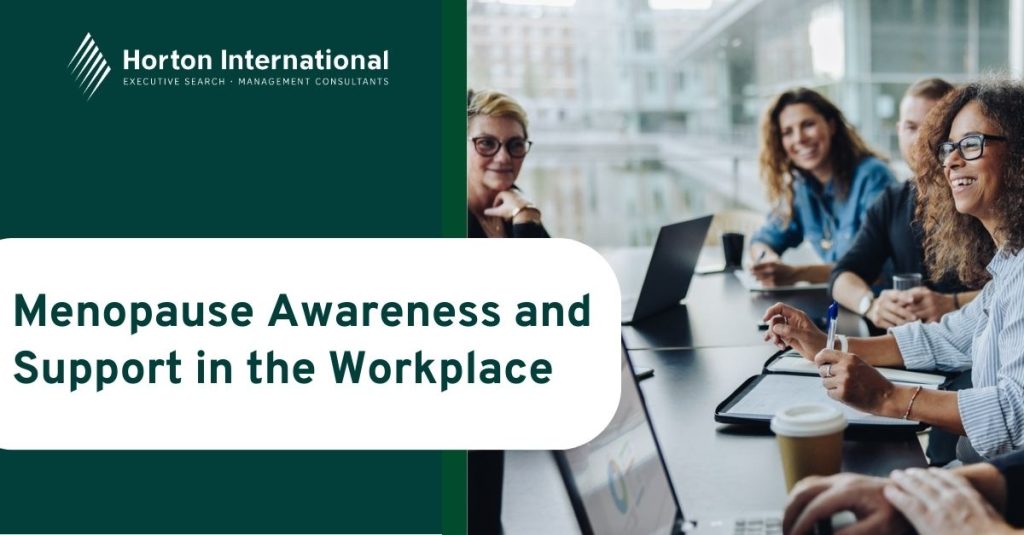In recent years, the conversation around menopause in the workplace has gained significant traction, shedding light on the challenges faced by women navigating this natural phase of life while pursuing their careers.
According to the 2021, Labour Force Survey, women of menopausal age (45-54) make up 11% of all people in employment and 23% of all women in employment. Many women can experience perimenopausal symptoms for years before their menopause, with three in 100 women going through the menopause before they are 40. It’s perhaps no surprise then that women experiencing menopausal symptoms represent the fastest growing demographic in the UK workforce, with nearly eight out of ten being in work.
However, there’s still a significant lack of awareness surrounding menopause, contributing to widespread discrimination. Research by the Chartered Institute of Personnel and Development found that two thirds (67%) of working women between the ages of 40 and 60 have had a negative experience of menopausal symptoms at work.
Of those who were negatively affected at work:
- 79% said they were less able to concentrate
- 68% said they experienced more stress
- 49% said they felt less patient with clients and colleagues, and
- 46% felt less physically able to carry out work tasks.

As a result of this, over half of respondents were able to think of a time when they were unable to go into work due to their menopause symptoms and research by the Fawcett Society found that one in ten women surveyed, left work due to their symptoms. Alarmingly, this occurs precisely when many of these women are at the pinnacle of their careers and should be enjoying the fruits of their extensive experience.
Despite the fact that the average age of menopause for women in the UK is 51, the retirement age has now been pushed to 68. The premature departure of women from the workforce not only poses personal distress for those affected, but also has far-reaching consequences for the economy, as it forfeits the invaluable skills and contributions of these experienced professionals.
The Equality and Human Rights Commission (EHRC) has issued new guidance that not only highlights employers’ legal obligations but also underscores the moral imperative of supporting women through this transition.
Legal Obligations
By offering clear guidelines and practical tips, the EHRC aims to empower employers to create inclusive workplaces where women feel valued and supported.
Under the Equality Act 2010, employers could now face legal action for disability discrimination if they fail to make reasonable adjustments for workers affected by menopause. If menopausal symptoms substantially impact a woman’s ability to carry out normal day-to-day activities, they may be considered a disability. This legal framework not only protects women from discrimination but also places a legal duty on employers to accommodate their needs.
However, despite these legal protections, research indicates that many women hesitate to request workplace adjustments, often due to concerns about potential reactions. This reluctance underscores the need for greater awareness and understanding among employers about their legal responsibilities in supporting menopausal employees.
Collaborative Efforts for Change
Change is starting to happen. Through campaigns, seminars and workshops, organisations around the world are beginning to educate their workforce about the challenges faced by menopausal women and how to provide support.
Recognising the fluctuating nature of menopausal symptoms, some employers are offering flexible working arrangements such as remote working, flexible hours and job sharing. These arrangements allow women to manage their symptoms while continuing to contribute to the workforce.
International Perspectives and Support
Around the world, efforts to support women through menopause are gaining momentum. In the United States, organisations like the Menopause Center at the Cleveland Clinic offer comprehensive resources and support for women navigating menopause.
Similarly, in Europe and the UK, initiatives such as Menopause Cafés provide safe spaces for open dialogue and support. Organisations such as Henpicked, The Menopause Charity and Wellbeing of Women in collaboration with the EHRC, have been at the forefront of driving awareness and action on menopause at work issues. Through advocacy, education and practical support initiatives, these organisations are working to create a culture where menopause is openly discussed and women are empowered to seek the support they need.
Continued research into menopause and its impact on women in the workplace is essential for developing targeted support strategies. By understanding the specific challenges faced by menopausal women, employers can tailor their support initiatives more effectively and policymakers can advocate for changes in the law to better protect menopausal women’s rights. By lobbying for legislative changes and workplace reforms, these efforts aim to create a more supportive and inclusive environment for menopausal employees.
Practical Steps for Employers
Human resources departments are now rolling out training programmes to equip managers with the knowledge and skills to support their team members going through menopause. These programmes cover topics such as understanding menopausal symptoms, effective communication strategies and implementing reasonable adjustments.
For employers looking to support employees through menopause, several practical steps can make a significant difference:
- Introduce a menopause policy to provide guidance for both employees and managers.
- Consider reasonable adjustments such as providing rest areas, temperature control, flexible hours and remote working options.
- Ensure health and safety risk assessments consider the specific needs of menopausal employees.
- Foster open discussions about menopause to reduce stigma and raise awareness.
- Provide training and resources for managers to support their teams effectively.
Conclusion: A Call to Action
While progress has been made in raising awareness and implementing support initiatives, there’s still much work to be done. By continuing to advocate for policy changes, investing in research and development, and fostering a supportive workplace culture, we can create environments where women are supported and empowered to thrive in their careers.







